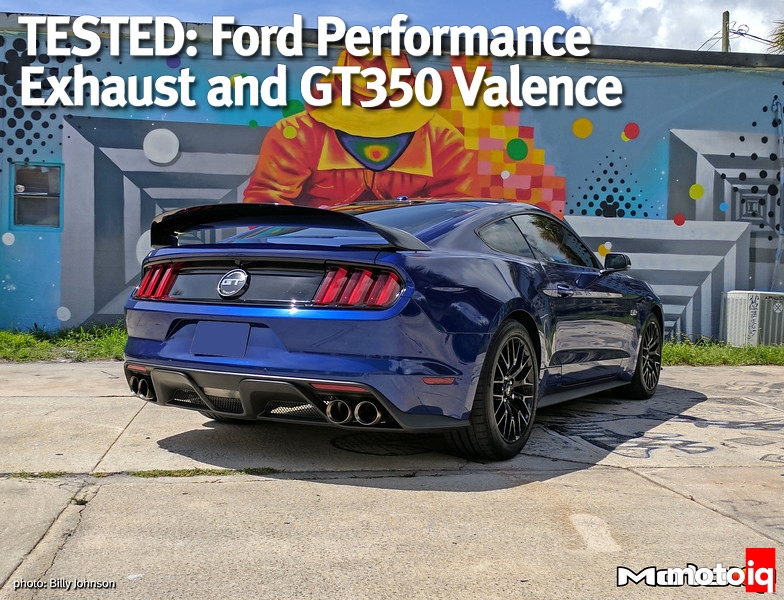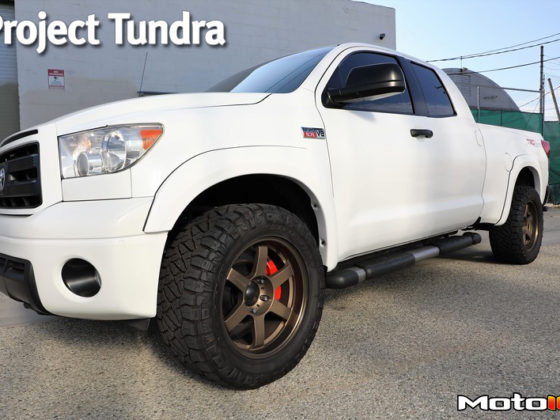 Dynoing the car in 4th gear, peak power comes in at 370whp at 6,550rpm with a peak torque of 342lb-ft at 4,000rpm. The torque curve is extremely flat and remains around 300lb-ft from 2,400-6,500rpm before running out of steam and choking at higher rpm. This makes for a very broad powerband out of the 5.0L Coyote V8.
Dynoing the car in 4th gear, peak power comes in at 370whp at 6,550rpm with a peak torque of 342lb-ft at 4,000rpm. The torque curve is extremely flat and remains around 300lb-ft from 2,400-6,500rpm before running out of steam and choking at higher rpm. This makes for a very broad powerband out of the 5.0L Coyote V8.
Our bone stock 2016 Mustang California Special put down a consistent 370whp and 342lb-ft of torque on a hot and humid 87*F Florida summer day. This number is about 10-15whp low compared to many stock 5.0L Mustangs for a few reasons. This is a base car with 3.31 rear gears that requires being dynoed in 4th gear to avoid hitting the top speed governor (3.73 geared cars can be dynoed in the proper 1:1 ratio 5th gear).
From Palm Beach Dyno’s testing, this reduces the peak power figure by 5-10whp. Our first pull was a few HP higher and heat soaked pulls were much lower, but we were looking for a consistent and repeatable power figure given our conditions, so we didn’t use the highest or lowest pull. By using 4th gear, the humidity and temperature, and not using the outlying power pulls, it makes sense where our baseline power figure ended up.

Here we can clearly see the difference of our 3.31 base GT (red) dynoed on a hot day in 4th gear vs a 3.73 equipped Performance Package using 5th gear on a 7*F cooler day with far less humidity (blue). In an A-B comparison test, we want repeatable conditions and test procedures, even if those conditions aren’t ideal for bragging rights, in which case we would have waited for winter to do this comparison. For kicks, we also added a stock GT350 pull (green) that was done on a much cooler and less humid day. You can see that the GT350 makes similar power and torque until 3,500rpm where it jumps up and blows away the 5.0L Coyote all the way to its stratospheric 8,250rpm redline. At 5,000rpm, the GT350 makes as much power as the Coyote does at its peak.
With the baseline dyno complete, we once again headed over to our friend Will at RareFab, just a few bays down from Palm Beach Dyno to install the new exhaust.

With the car on the lift, we can see that the entire exhaust from the catalytic converter back is a single, giant piece. Most aftermarket “axle-back” exhausts require cutting the factory exhaust right after the differential and then installing the new mufflers with a clamp. “Cat-back” exhausts on the other hand, require no cutting and replace the entire once piece assembly.
 The first step is to remove the four bolts that clamp the resonator to the catalytic converters. A top tip, soak the rusted nuts with NanoPro MT – Penetrating Oil (available at AutoZone) for a few minutes to make loosening the nuts much easier. NanoPro’s Penetrating Oil is by far the best penetrating oil we’ve ever seen.
The first step is to remove the four bolts that clamp the resonator to the catalytic converters. A top tip, soak the rusted nuts with NanoPro MT – Penetrating Oil (available at AutoZone) for a few minutes to make loosening the nuts much easier. NanoPro’s Penetrating Oil is by far the best penetrating oil we’ve ever seen.
 Now that the nuts are loosened, hammer the clamp over the resonator for easy removal.
Now that the nuts are loosened, hammer the clamp over the resonator for easy removal.




3 comments
Great sounding cat back. But how much louder is the sport from Ford Performance? Also is the tone deeper on the Ford Performance than on the Borla?
Noticeably louder and drones more.
I have a 2017 GT PP and I have the Ford Performance power pack level 2 installed by My local dealer. Would I benefit more from the touring or sport cat back?